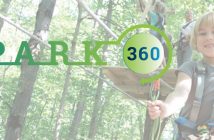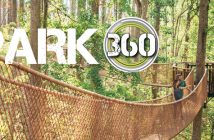According to the U.S. Census Bureau, nearly one in five people in the United States have a disability. That’s about 56.7 million people—more than half of which classify their disability as “severe.” For the most part, this large population has been excluded from the recreational pursuits that able-bodied folks take for granted. Now, one industry vet is trying to change that.
Everybody’s Playground
Mike Fischesser owns Beanstalk Builders and operates the Beanstalk Journeys zipline park in Morganton, N.C. Fischesser, who’s been building ropes courses since the late 1960s, is passionate about accessibility. He’s been pushing the concept since he founded Alpine Towers, a successful and respected challenge course company, in 1989. Around that time, he started to note the lack of options for folks with disabilities in outdoor recreation.
“Accessibility was a weak spot in the industry,” says Fischesser, who notes accessibility was “really pushed” at Alpine Towers from around 1991 onward. “We were working to create adventure courses and ropes courses for all abilities.”
Fast-forward 20 years. Fischesser sold Alpine Towers in 2010 to concentrate on his non-profit American Adventure Service Corps program, and later, Beanstalk Builders. The accessibility element remained front-of-mind and a “longstanding goal,” so Fischesser convened a group of people who are experts on accessibility and put them to work brainstorming about what sorts of elements and designs would be crucial for a truly accessible playground.
The results of this research and think-tank brainstorming came to fruition in January, when the “Everyone’s Beanstalk Playground” opened at Catawba Meadows, a city-owned public park that houses the Beanstalk Journeys zip park and other recreational activities.
The playground, which is filled with rope events, traditional slides, nine tree houses, and other typical playground-type things, is designed for everyone, says Fischesser. At least a dozen of its 40 elements are universally accessible. This includes specific elements, like a wheelchair swing that allows users to ride without exiting their chair, as well as the overall design, like ramps allowing wheelchair access to a central platform that is 8 feet off the ground.
“We did a lot of work to make this universal in design, and also inclusive, meaning folks in wheelchairs can play on the playground without getting out of their chair,” says Fischesser.
The idea that people who use wheelchairs can access features without being moved from a chair is unusual. Typically, these visitors must be moved from a chair to an adaptive device in order to participate in an activity.
Fischesser says, for this population, sometimes the fact that they are able to participate in a seemingly basic experience is unique enough, even if they choose not to participate in anything else during their visit. “One of the biggest thrills is that they can get to the elements on their own, in their chairs, without a special device,” says Fischesser. “If for nothing else, that’s their big adventure. That’s huge for a lot of people in a chair.”






